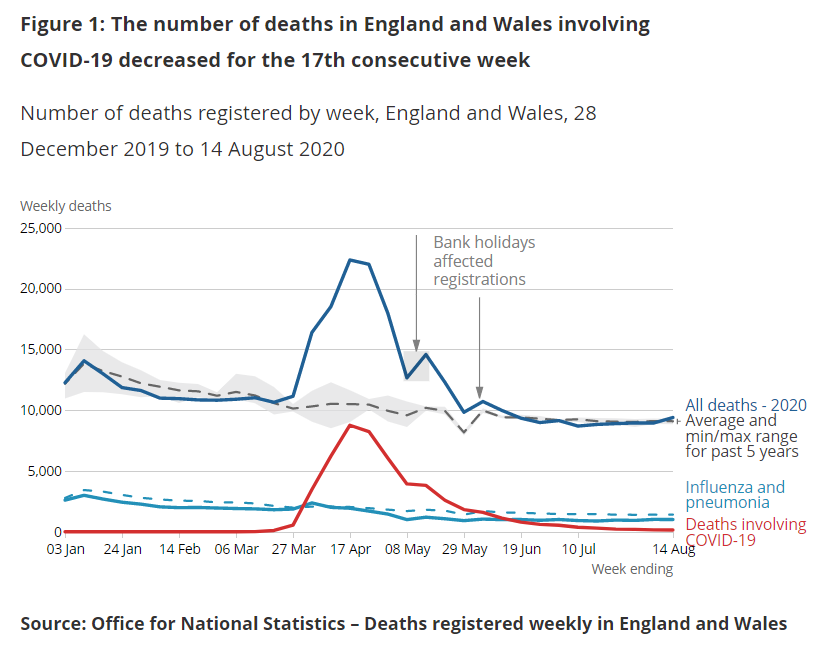
latest
Social Care Data Finder: August update

Our Social Care Data Finder reflects the latest updates to official statistics and local authority data sets made publicly available about adult social care in England.
Unsurprisingly, COVID-19 continues to provide a focus for the data sets generated by central and local government. The weekly death figures from the ONS show that over the last week, the number of registered deaths was above the five-year average, although this observation was not attributed to coronavirus as the COVID-19 related deaths continued to decline (See Figure 1). In fact, deaths involving COVID-19 were the lowest they have been since lockdown began at the end of March. Concerns have been raised that a relative relaxation of lockdown measures, coupled with factors such as the hot weather at the end of July and early August, and August’s ‘Eat out to help out’ scheme, means that individuals are now increasingly coming into contact with larger numbers of people. This may in turn give rise to another spike in infections – next month’s update should give a clear indication of whether such concerns are well-founded.
The Office for National Statistics (ONS) reported last week that the rate of infection in the general population in England and Wales appears to have levelled off. Data about infection amongst social care workers, specifically, is more elusive; the ONS’s figures (from the Vivaldi study) for this group are based on reports from care providers (as opposed to verified test data) and have not been updated since early July.
There have also been delays in transitioning to weekly testing in care homes during August due, in part, to a product recall impacting certain testing kits. Without regular testing in care homes, it is logistically difficult to test residents and staff at regular intervals, especially where individuals are frail or unable to travel to a testing site. Given the concerns raised by the Care Quality Commission (CQC) over the impact of COVID-19 on the care workforce, this lack of testing and, with it, comprehensive data to aid monitoring efforts is striking.
The latest Department for Health and Social Care (DHSC) report on the NHS Test and Trace programme shows an increase of 34% in positive cases in the week 6th-12th August (compared to the previous week) in Pillar 1 which includes, but is not limited to, care home residents and staff. This increase is higher than that for Pillar 2 (wider population swab testing, 26% increase over the previous week), suggesting that rates of infections may again be rising among the most vulnerable. Without a further breakdown to understand infection rates amongst different groups this is difficult to determine.
There have been calls for improved sharing of test data and collaboration between central government and local authorities. This is crucial in the scenario of a local lockdown of the sort we have already seen in the UK during the Summer months. The latest Insight Report from the CQC demonstrates some examples of good practice in this respect and the associated benefits for care provision. The latest Test and Trace report and review of the statistics by the Office for Statistics Regulation (OSR), highlight where the turnaround of test results and subsequent contact tracing can be made more rigorous and efficient – an effective system is critical to containment of the virus over the months to come.

